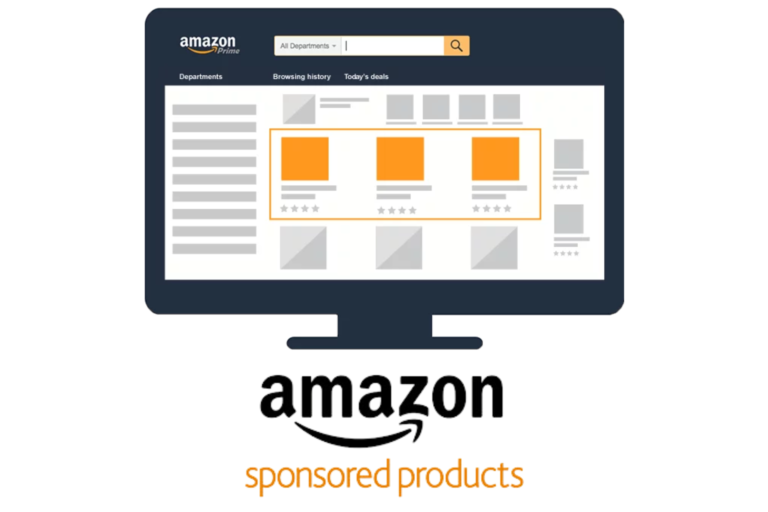A Guide to Keywords, Bids, and Budgets for Amazon Ads
A Guide to Keywords, Bids, and Budgets for Amazon Ads

The Amazon marketplace is a vast ecosystem, teeming with opportunity for sellers. But navigating this digital jungle requires mastering the art of advertising, particularly when it comes to keywords, bids, and budgets. This comprehensive guide equips you, from fledgling seller to seasoned pro, with the knowledge to conquer the Amazon ad landscape and maximize your return on investment (ROI).
Part 1 – Keyword Mastery – The Foundation of Success
Keywords are the lifeblood of Amazon advertising. Choosing the right ones determines who sees your ads and ultimately, how many sales you generate. Let’s delve into the world of keywords:
Beginner
- Understanding Search Intent: Put yourself in the buyer’s shoes. What terms would they use to search for a product like yours? Brainstorm a list of relevant keywords and consider variations.
- Amazon Keyword Research Tools: Utilize free tools like Amazon Seller Central’s search bar and “Sponsored Products” suggestions. These can provide a starting point for relevant keywords.
Intermediate
- Keyword Research Powerhouses: Graduate to paid tools like Jungle Scout, Helium 10, or MerchantWords. These tools offer in-depth keyword research with data like search volume, competition level, and estimated cost-per-click (CPC).
- Negative Keyword Magic: Don’t waste budget on irrelevant clicks! Identify negative keywords – terms people wouldn’t use to find your product (e.g., “free”, “used”) and add them to your campaigns.
Advanced
- Long-Tail Targeting: Go beyond generic keywords. Target long-tail keywords that are more specific and have lower competition (e.g., “best wireless headphones for running”). This can lead to higher conversion rates.
- Search Term Match Types: Amazon offers various match types for keywords (broad, phrase, exact). Experiment with different match types to find the optimal balance between reach and relevance.
Real-World Data Spotlight – A 2024 Jungle Scout report revealed that sellers using a combination of broad, phrase, and exact match keywords with a focus on long-tail terms experienced a 15% increase in conversion rates compared to those solely relying on broad match keywords.
Part 2 – Bidding Strategies – Mastering the Auction
Amazon Sponsored Products operate on an auction system. The seller with the highest bid (considering other factors like relevance) wins the ad placement for a specific search term. Bidding strategies determine how much you’re willing to pay for clicks on your ads.
Beginner
- Automatic Bidding (Maximize Conversions): This beginner-friendly strategy allows Amazon to set bids automatically to achieve the most conversions possible within your daily budget. It’s ideal for driving initial sales and gathering data.
Intermediate
- Manual Bidding: Take control! Set specific bids for each keyword based on your budget, profit margins, and desired ROAS. This strategy requires ongoing monitoring and adjustments but offers greater control.
Advanced
- Downstream Bids (Target ROAS): This automated strategy sets bids to achieve a specific target return on ad spend (ROAS). It’s ideal for established products with well-defined margins and focuses on maximizing profit.
- Bid Adjustments: Refine bids for specific ad groups, product categories, or placements to optimize performance. For example, you might increase bids for high-converting keywords or decrease bids for underperforming placements.
Real-World Example – Imagine you sell a phone case with a 20% profit margin. Setting a target ROAS of 4 with Downstream Bidding instructs Amazon to adjust bids automatically to achieve a 4x return on your ad spend. This ensures you generate a healthy profit from every conversion.
Part 3 – Budget Bliss – Setting Your Spending Limits
Your budget determines how much you’re willing to spend on your Amazon ad campaigns daily or throughout a specific timeframe. Striking the right balance is crucial.
Beginner
- Start Small: Begin with a modest daily budget and gradually increase it as you gain confidence and data on campaign performance. Consider your overall marketing budget and product profitability when setting initial budgets.
Intermediate
- Budget Allocation: Divide your budget strategically across different ad groups or campaigns based on their goals. Allocate a larger budget to high-performing campaigns or product categories with higher margins.
Advanced
- Dynamic Bidding Strategies: Consider using Amazon’s dynamic bidding strategies like “Target Impression Share” or “Estimated Bids for Top of Page.” These strategies automatically adjust bids based on real-time factors to achieve desired goals (e.g., appearing at the top of search results).
Data-Driven Tip – Analyze historical data from previous ad campaigns or competitor research tools to establish a baseline for budget allocation and potential return on investment.





